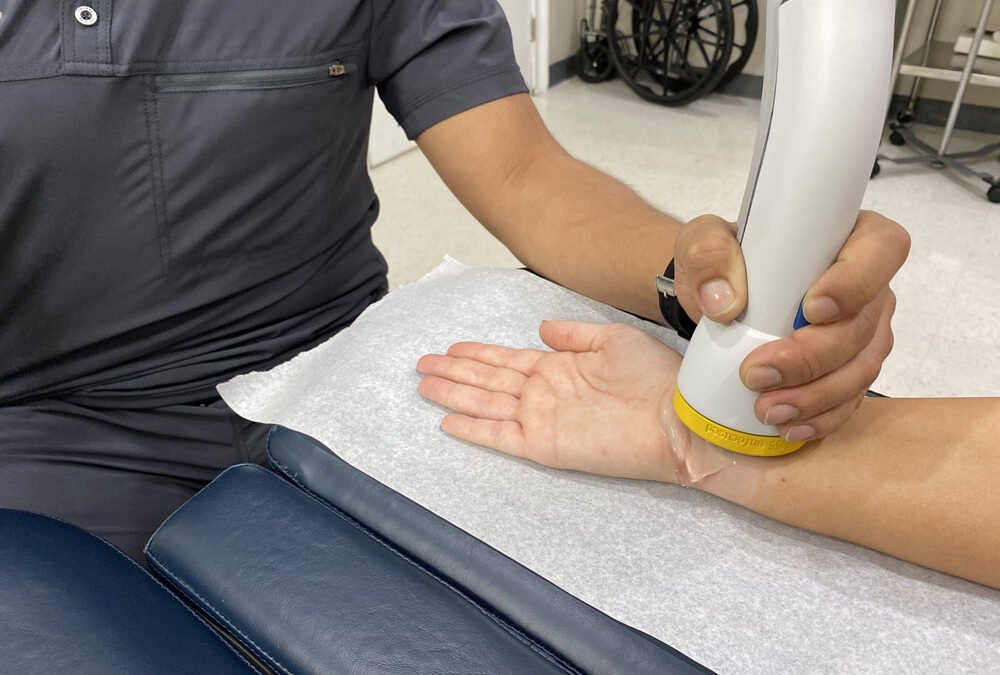Chronic neuropathy pain, a complex condition causing discomfort and distress for many, often prompts the search for effective treatments. Softwave Therapy offers a potential solution. This non-invasive therapy uses shockwave technology to target pain at its source, aiming to alleviate symptoms and improve the quality of life for sufferers. As interest grows in alternative treatment options, Softwave Therapy presents itself as a promising candidate for those battling chronic neuropathy pain.
Chronic Neuropathy and Its Challenges
Chronic neuropathy often results from nerve damage due to various factors such as diabetes, injuries, or infections. Patients typically experience numbness, tingling, sharp pains, and sometimes muscle weakness. The persistent nature of these symptoms not only affects physical capabilities but also impacts emotional well-being, leading to issues such as anxiety and depression.
One of the primary difficulties in managing chronic neuropathy is its unpredictable symptom patterns. Unlike acute pain that signals a specific injury or illness, neuropathy pain can occur without apparent triggers, making it hard to predict and manage. This unpredictability often leads to a trial-and-error approach in finding effective treatments, which can be frustrating and time-consuming for patients.
Chronic neuropathy often requires a multifaceted treatment approach. Since it’s a condition that affects the nervous system, treatments need to address the physical symptoms and underlying causes. This may include managing blood sugar levels in diabetic patients or addressing nutritional deficiencies. The complexity of this condition necessitates a comprehensive management plan, which can include medication, lifestyle changes, and possibly alternative therapies like Softwave therapy.
Overview of Softwave Therapy
Softwave therapy utilizes shock wave technology to stimulate healing and pain relief. This non-invasive approach delivers acoustic waves deep into the tissues, triggering biological responses that promote tissue repair and reduce inflammation. Unlike traditional therapies focusing solely on symptom relief, Softwave Therapy aims to initiate a natural healing process within the body.
At its core, the technology relies on the principle of mechanotransduction, where mechanical energy is transformed into biological responses. When the acoustic waves reach the targeted area, they encourage the release of growth factors and the recruitment of stem cells. This response is crucial for tissue regeneration and reducing inflammation, making it particularly beneficial for conditions like neuropathy, where nerve damage and inflammation are predominant.
One of the standout features of Softwave Therapy is its ability to reach deep tissues without invasive procedures. This aspect is especially important for neuropathic pain, which can often be deep-seated and difficult to treat with surface-level therapies. The ability to target deep tissues means a more comprehensive approach to addressing the root cause of the pain.
Another significant advantage of Softwave Therapy is its safety profile. As a non-invasive treatment, it poses fewer risks than surgical interventions or long-term medication use. This makes it an attractive option for those seeking alternatives to conventional pain management methods, especially when dealing with chronic conditions like neuropathy that require ongoing treatment.
Comparing Softwave Therapy with Traditional Treatments
Traditional treatments for neuropathy often involve medication, physical therapy, and, in some cases, surgical interventions. These well-established methods have been the go-to for neuropathy treatment for years. However, they can sometimes lead to side effects or may not be effective for all patients.
SoftWave Therapy, on the other hand, represents a newer approach. It uses shock wave technology to stimulate the body’s natural healing processes. Unlike some traditional treatments, it is non-invasive and has minimal side effects. This makes it an appealing option for patients looking for alternative treatments.
To highlight the distinctions:
- Medication: Often used in traditional treatment, it can cause side effects.
- Surgery: This may be required in severe cases involving risks inherent to surgical procedures.
- Physical Therapy: Common in both traditional and new treatment regimes; focuses on pain management and improving mobility.
- SoftWave Therapy: Non-invasive, minimal side effects; focuses on stimulating natural healing processes.
It’s essential for patients to discuss with their healthcare provider to understand the best approach for their condition, whether it’s traditional methods, SoftWave Therapy, or a combination of both.
Potential Side Effects and Safety Concerns of Softwave Therapy
When evaluating the potential side effects and safety concerns of Softwave therapy, it’s important to consider both the short-term and long-term implications of this treatment. Generally, Softwave therapy is regarded as a safe procedure with minimal side effects. Most patients undergoing this therapy report no adverse reactions. However, as with any medical treatment, patients should be aware of potential risks and side effects.
Commonly reported side effects are usually mild and temporary, including localized discomfort, redness, or swelling at the treatment site. These symptoms typically resolve quickly and do not require additional intervention. The non-invasive nature of Softwave therapy contributes to its safety profile, as it reduces the risk of complications associated with surgical procedures.
Nevertheless, it’s crucial to thoroughly assess each patient’s medical history and current health status before initiating Softwave therapy. This ensures that the treatment is appropriate and safe for each individual. Ongoing research and clinical trials continue to monitor the safety and efficacy of Softwave therapy, providing valuable data to help guide its use in clinical settings. As with any medical treatment, patient education, and informed consent are key components of ensuring a safe and successful treatment experience.
Patient Selection Criteria
When selecting patients for Softwave therapy in the context of neuropathy, careful consideration is essential to ensure optimal outcomes. The selection criteria typically revolve around the patient’s medical history, the severity and type of neuropathic pain, and any underlying health conditions that may influence the effectiveness or safety of the therapy. This patient-specific approach helps identify individuals likely to benefit most from Softwave therapy.
A comprehensive evaluation is crucial in this process. They assess various factors, such as the duration and intensity of pain, previous treatment responses, and overall health status. This assessment helps determine whether Softwave therapy is suitable for a particular patient. Identifying any contraindications that might preclude a patient from receiving this therapy, such as certain medical implants or pregnancy, is especially important.
Post-evaluation, a tailored treatment plan is developed, taking into account the individual characteristics of the patient’s neuropathy. This plan includes the therapy itself and considers the frequency and duration of the treatment sessions. Continuous monitoring and follow-up care are vital to track the therapy’s effectiveness and adjust the treatment plan as needed. This personalized approach ensures patients receive the most appropriate and effective care for their neuropathic condition.
Contact Rittenhouse Square Chiropractic
At Rittenhouse Square Chiropractic, we are dedicated to providing top-notch care and treatment options, including Softwave therapy, to those suffering from chronic neuropathic pain. Our team of experienced professionals is committed to offering personalized care that addresses each patient’s unique condition.
We encourage anyone interested in exploring Softwave therapy as a treatment option to contact us. Our staff is ready to answer any questions, provide detailed information, and help schedule consultations.

